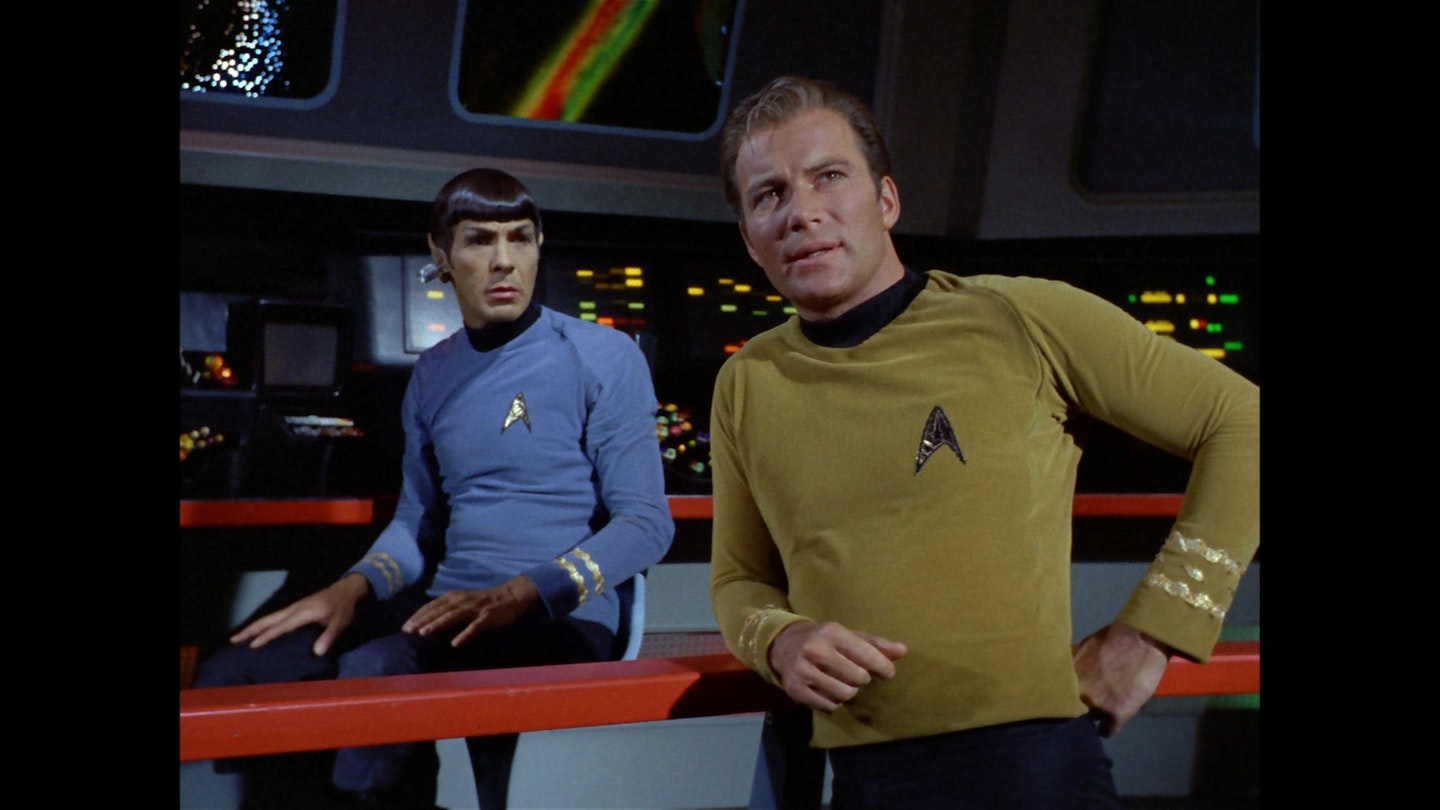Take whatever side you'd like in the Star Trek vs Star Wars debate, but let's give Trek its props: the original series, which celebrates its 50th Anniversary on September 8th, has spawned five television spin-offs (with a sixth on the way), thirteen feature films (with a fourteenth on the way), half a century's worth of tie-in merchandise and hundreds of novels and comic book adventures.
Any way you cut it, an impressive achievement with audiences engaged (well, a good portion of the time anyway) in over 700 voyages with various starship and space station crews. Yet with all of that time spent in space, all of those adventures experienced, there were even more intended, some of which would have actually been worthwhile. What follows then is a look at ten of those lost voyages of the starships Enterprise.
STAR TREK: THE ORIGINAL SERIES (1966-69)
Created by Gene Roddenberry and the one that started it all, bringing us William Shatner as Captain James T. Kirk, Leonard Nimoy as Mr. Spock, DeForest Kelley as Dr. Leonard "Bones" McCoy, George Takei as Sulu, Nichelle Nichols as Uhura, James Doohan as Scotty, and Walter Koenig as Chekov.
"He Walked Among Us" - Written by Gene L. Coon and Norman Spinrad
Designed for the second season, the original concept by author Norman Spinrad (who wrote the Star Trek episode "The Doomsday Machine") dealt with the popular theme of a sociologically contaminated society. In this case the culprit is Federation sociologist Bayne, who inadvertently supplies an alien race known as the Jugali with technology far beyond their capabilities, finding himself elevated to godhood as a result. The intent was for Golden Age television star Milton Berle to star as Bayne and Spinrad wrote with that in mind.
"After 'The Doomsday Machine,'" he explains, "they wanted me to write another episode and they gave me two things. They sent me to a backlot way out in Culver City [California], which was overgrown with weeds, where they had this weird village set. Then they told me that Milton Berle wanted to do a Star Trek. So I had Milton Berle and this village. I know that Berle can be a serious actor, but he likes weird get-ups. I said, 'OK, let Milton Berle be a messiah,' and that was the germ of the idea: Milton Berle would go to an alien planet and be set up as a god."
Where things went awry, says Spinrad, is when producer Gene L. Coon elected to do a rewrite of the script. "Basically," he reflects, "Coon rewrote a serious anthropological piece of material into something being played for laughs. I was so pissed off that I called up Gene Roddenberry and said, 'Gene, you cannot do this. You have to kill this script,' and he agreed to do that. I killed my own script rather than have it presented in that way."
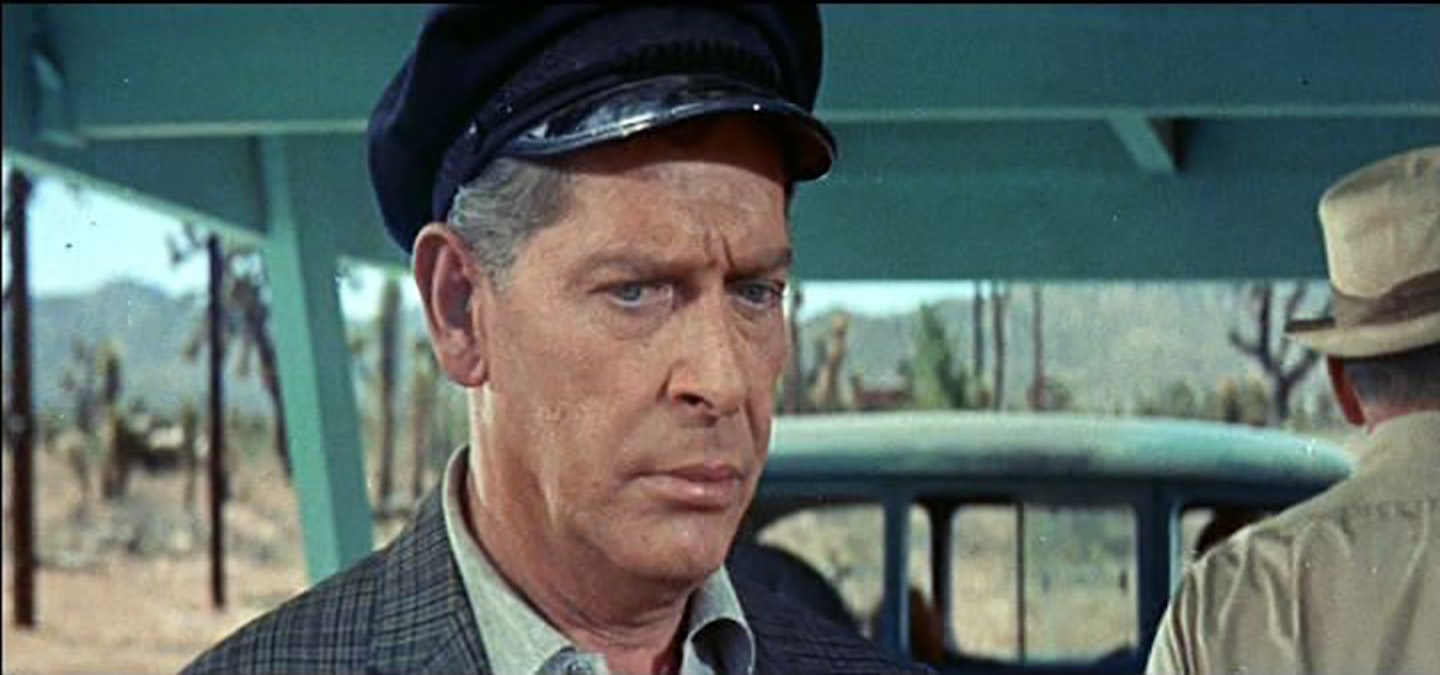
**"Deep Mudd" -
Written by Stephen Kandel**
Harry Mudd is one of the original Star Trek's most popular adversaries, though he was played largely for laughs. The intergalactic conman, as portrayed by Roger C. Carmel, appeared in season one's "Mudd's Women" and season two's "I, Mudd," as well as the animated series' "Mudd's Passion." All three were written by Stephen Kandel, who wrote a treatment for the live action series called "Deep Mudd." Picking up threads from "I, Mudd," it would have seen Harry escape from the android world that Kirk had left him on. Discovering highly advanced weaponry, he uses it to trade with space pirates in exchange for his freedom, which is about when things go terribly wrong.
"The problem," says Kandel, "was that he could control neither the weapons nor the pirates. They tangled with the Enterprise on a planet with a surface of molten, viscous mud. And it went from there. That was basically it: bailing Harry Mudd out of his own problems, getting control of this weaponry they couldn't destroy and sending it into a sun."
Due to the fact that Carmel wasn't available at the time, the story never went beyond the treatment stage.

STAR TREK II: FEATURE FILM TREATMENT, VERSION 1
Written by Jon Povill, 1975
Planet Vulcan passes through an area of space in which they had previously released a "psychic cloud" that - they believed - would fill the enemy with distrust that would break down all military discipline and create chaos within the enemy ranks. They had done this in the final war that they'd fought, a war in which things were going so poorly that they were forced to release the cloud prematurely, without full testing that would have revealed that it only worked on Vulcans. Now a movement of star systems has brought Vulcan into this area of space. Interestingly, in order for Spock to be free of the influence of the cloud, he has to focus himself totally on the human half of his being - and he remains human and quirky for the majority of the story. Ultimately, the Enterprise must go back in time to the final Vulcan war in an attempt to prevent the release of the cloud. When they fail to do so, Spock uses the equipment to send out a psychic cloud of his own - of logic, trust, restraint and respect that effectively counteracts the effects of the initial cloud. And the Enterprise turns the tide in the war against the ancient foe so that Vulcan is not conquered or destroyed.
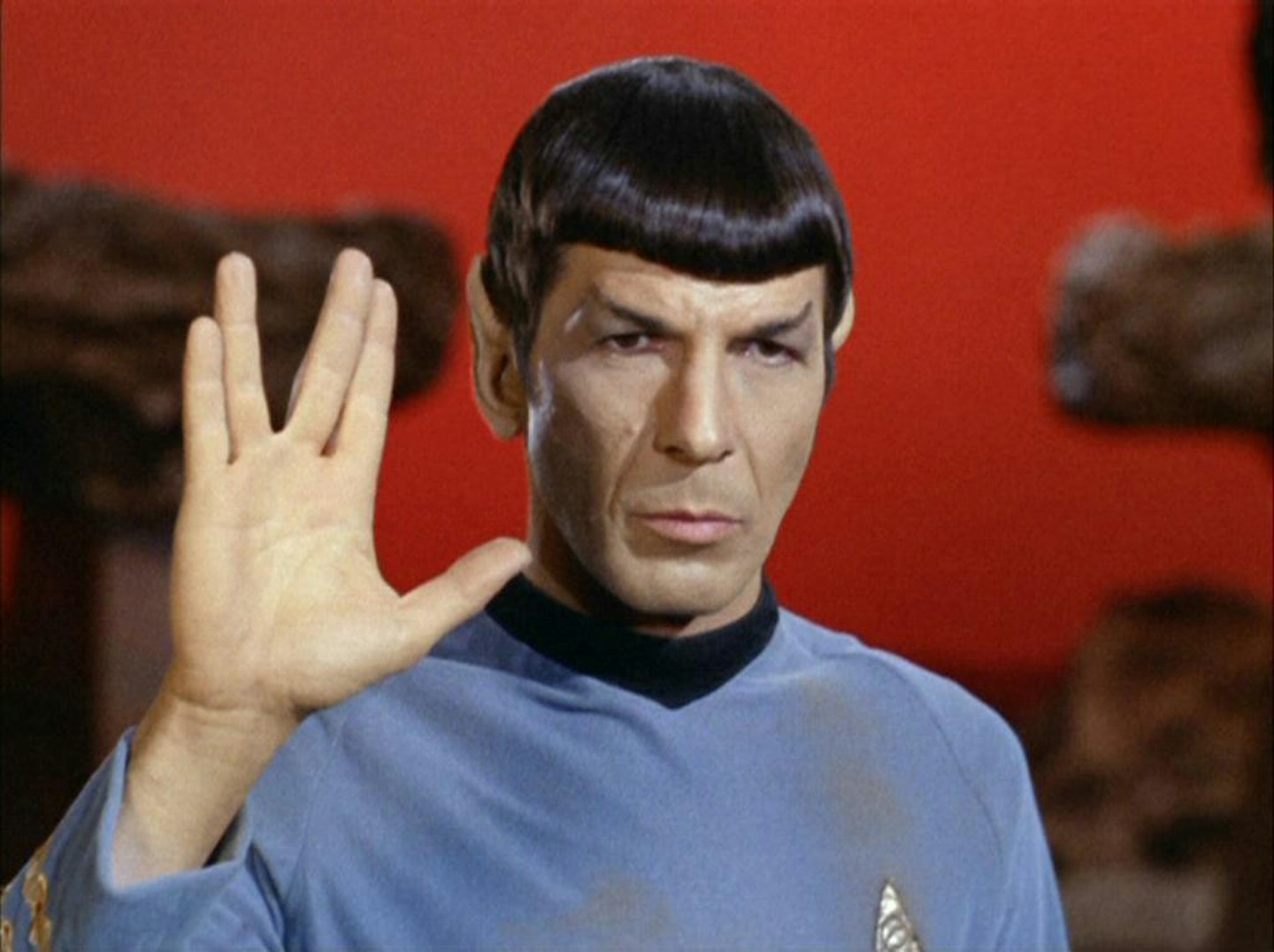
STAR TREK II: FEATURE FILM TREATMENT, VERSION 2
Written by Jon Povill and Gene Roddenberry, 1975
In this version, rather than Spock being responsible for the change in Vulcan personality from hot-blooded warriors to peaceful beings ruled by logic, Scotty is responsible for wiping Earth out of the Federation. The Enterprise and all aboard it had been destroyed by a black hole while Spock and Scotty, in smaller research vessels without the gravitational disrupting issues of warp engines, had managed to escape. Scotty, in a desperate attempt to go back in time and prevent his precious ship and crew from slipping into the event horizon, miscalculates, winds up in 1937 and triggers changes with a snowball effect. His efforts to stop the snowball only make things worse for his original time period, though they do make things considerably better between 1937 and 1964. World War II is avoided, Kennedy is not assassinated, medical science advances substantially and a whole bunch of other boons make it impossible for world leaders to agree to help Kirk set things right for the future by plunging the 20th century back into the horrors stored in the Enterprise's history records. Kennedy, however, recognizes the greater good and helps Kirk destroy his world to create the better one. As an added bonus: Einstein, Churchill, Kennedy, Hitler and others get a tour of the starship.
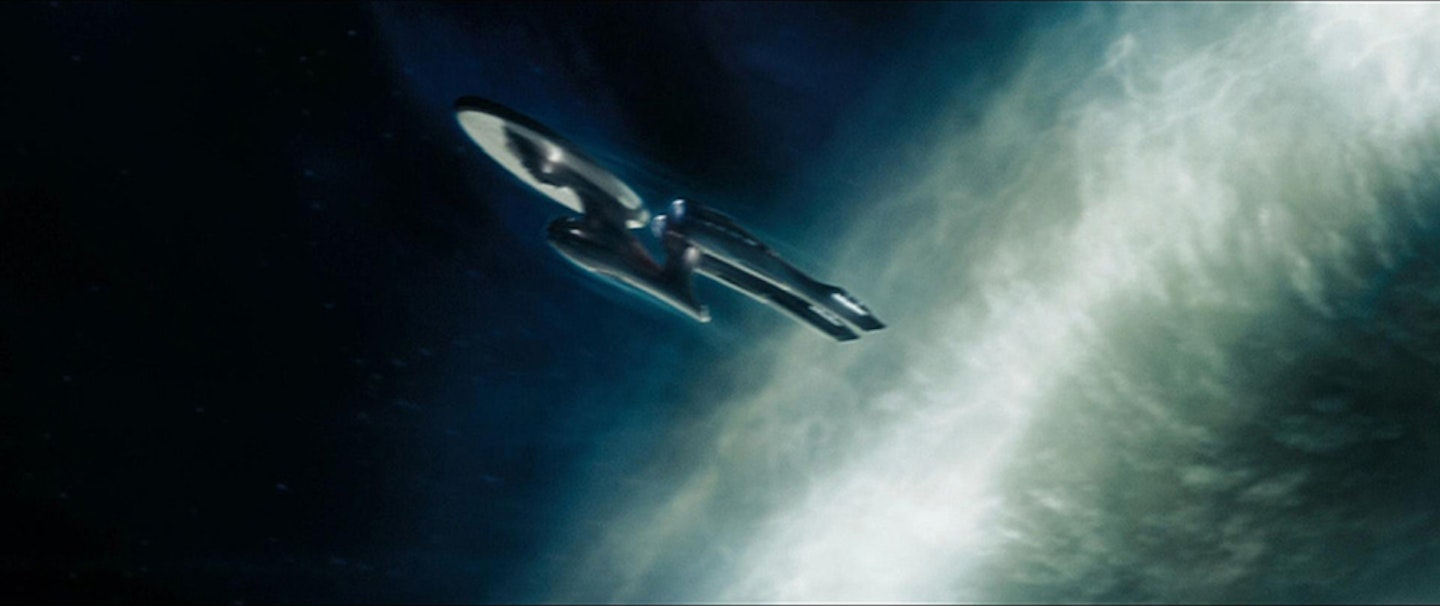
STAR TREK II (1977)
Later to become known as Star Trek Phase II, this was the attempted television series that would have seen the original crew with the exception of Nimoy reunited for what was intended to be a new five-year mission. Additional cast members were Vulcan science officer Xon, first officer Will Decker and Deltan navigator Ilia (Decker and Ilia would make the transition to 1979's Star Trek: The Motion Picture, which the show itself ultimately became).
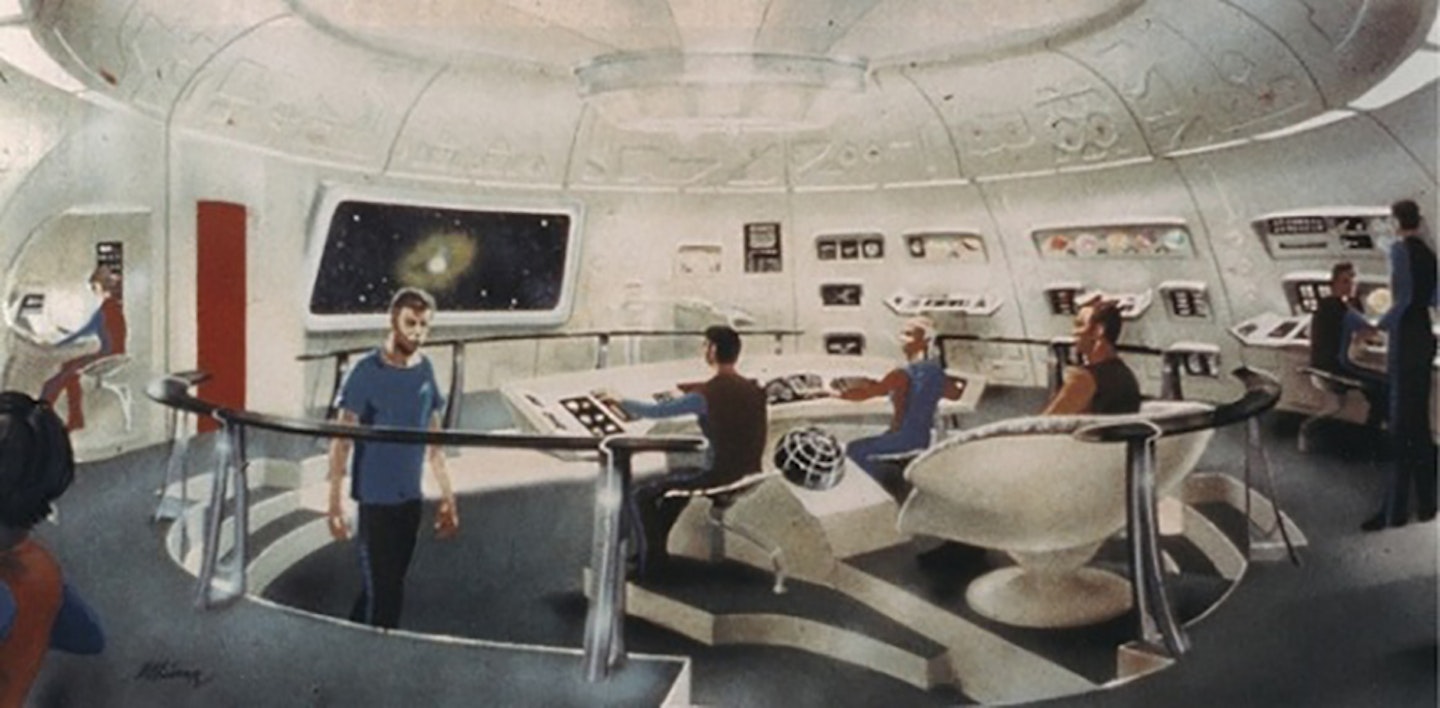
**"Practice In Waking"
- Written by Richard Bach**
The Enterprise comes upon a sleeper ship with only a single passenger. Scotty, Decker and Sulu beam over to investigate and discover a woman in suspended animation. Scotty inadvertently touches a control panel and the three collapse to the deck, only to reawaken in ancient Scotland without memory of their lives aboard the starship. In the past they meet with the same woman and protect her from the mobs who claims that she is a witch. On the Enterprise, McCoy discovers that the trio's life signs are growing progressively weaker. His prognosis is that the longer they remain in this dreaming state, the closer they come to actually dying. Kirk and crew must somehow awaken them before they drift off into final sleep.
On the staff of Star Trek II, this contribution by Richard Bach, who had written the acclaimed 1970s best-sellers Jonathan Livingston Seagull and Illusions: The Adventures Of A Reluctant Messiah, was considered a genuine coup.
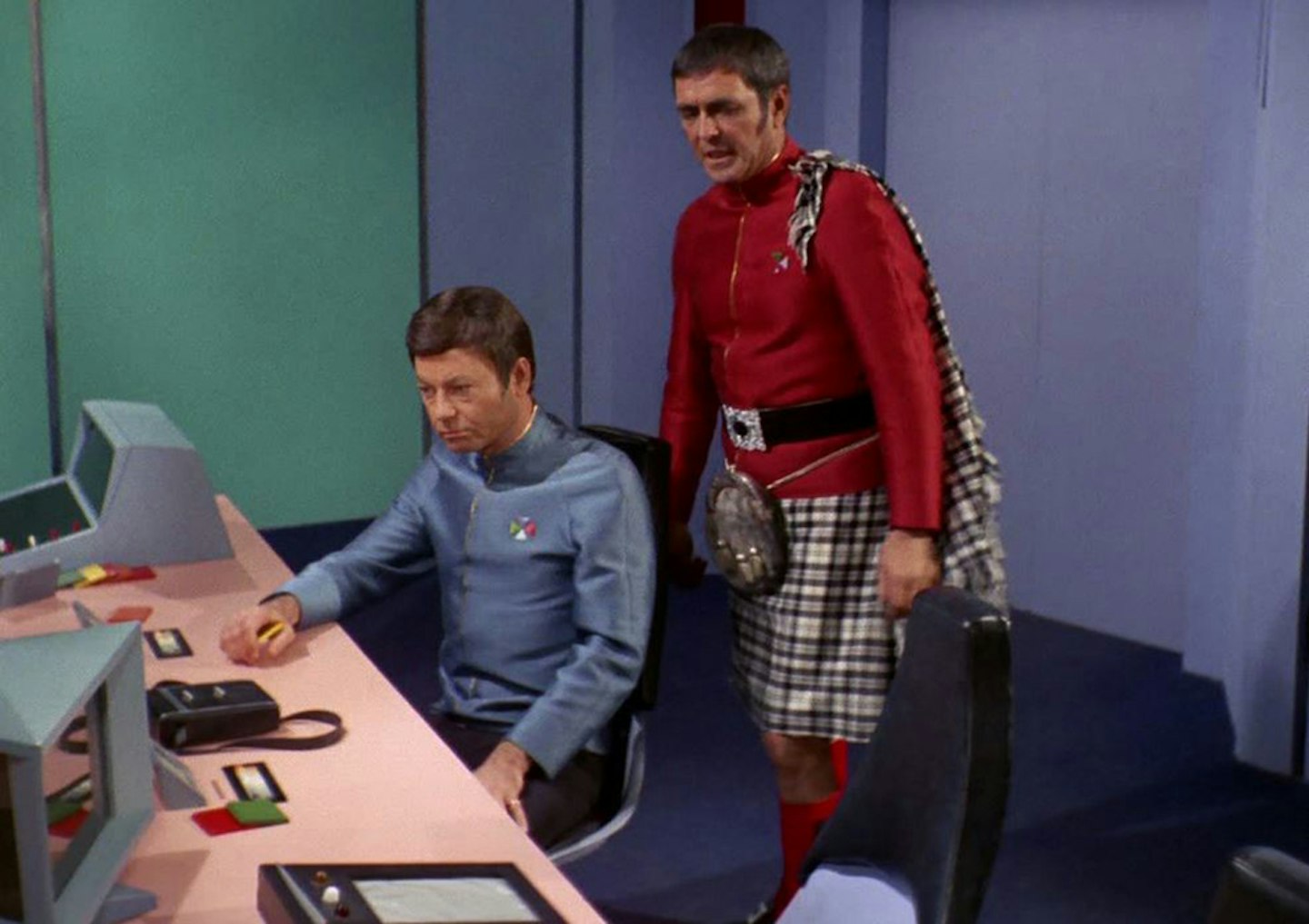
**"To Attain The All"
- Written by Norman Spinrad**
While trapped in another dimension, the Enterprise is boarded by a blue-skinned alien who refers to himself as The Prince. He tells Kirk and the others that if they prove worthy, humanity will be the recipient of the ultimate gift: the attaining of the "All".
Kirk reluctantly accepts the demand that Decker and Xon, representatives of their respective species, be the ones who will attempt to unlock the Prince's secret. If Kirk refuses, the starship will never be allowed to return home. The duo appear in a maze-like structure within a planetoid and are told that their goal awaits them at the other end. They proceed, and at mid-journey take note of a bizarre switch in personality traits: Xon utilizes human intuition while Decker applies Vulcan-like logic to problems.
They reach the other end of the maze and the glowing spheres that await them. Xon reaches out to touch one and his mind is assaulted by an energy unlike any encountered before. Then, with the Vulcan serving as a conduit, the alien intelligence within the sphere begins spreading its influence through the Enterprise. It rapidly possesses the majority of the ship's crew and engineers what seems to be a permanent switch of personality traits. It's soon obvious that they're all becoming part of a single mind. The intelligence inside the sphere plans to force the humans to merge with the All, which, after acquiring physical bodies, could go deep into space and merge with all intelligent beings. It's up to Kirk (and eventually Decker) to save them.
Details Spinrad, "I've always been fascinated by the "high mind" concept, which I have dealt with in books. 'To Attain The All' would have made a great TV piece, because it's all in the acting. They all take on each other's characteristics, which is something really weird and strange that wouldn't be as interesting in a novel, but would as a film or play. Something oral. Something with acting."
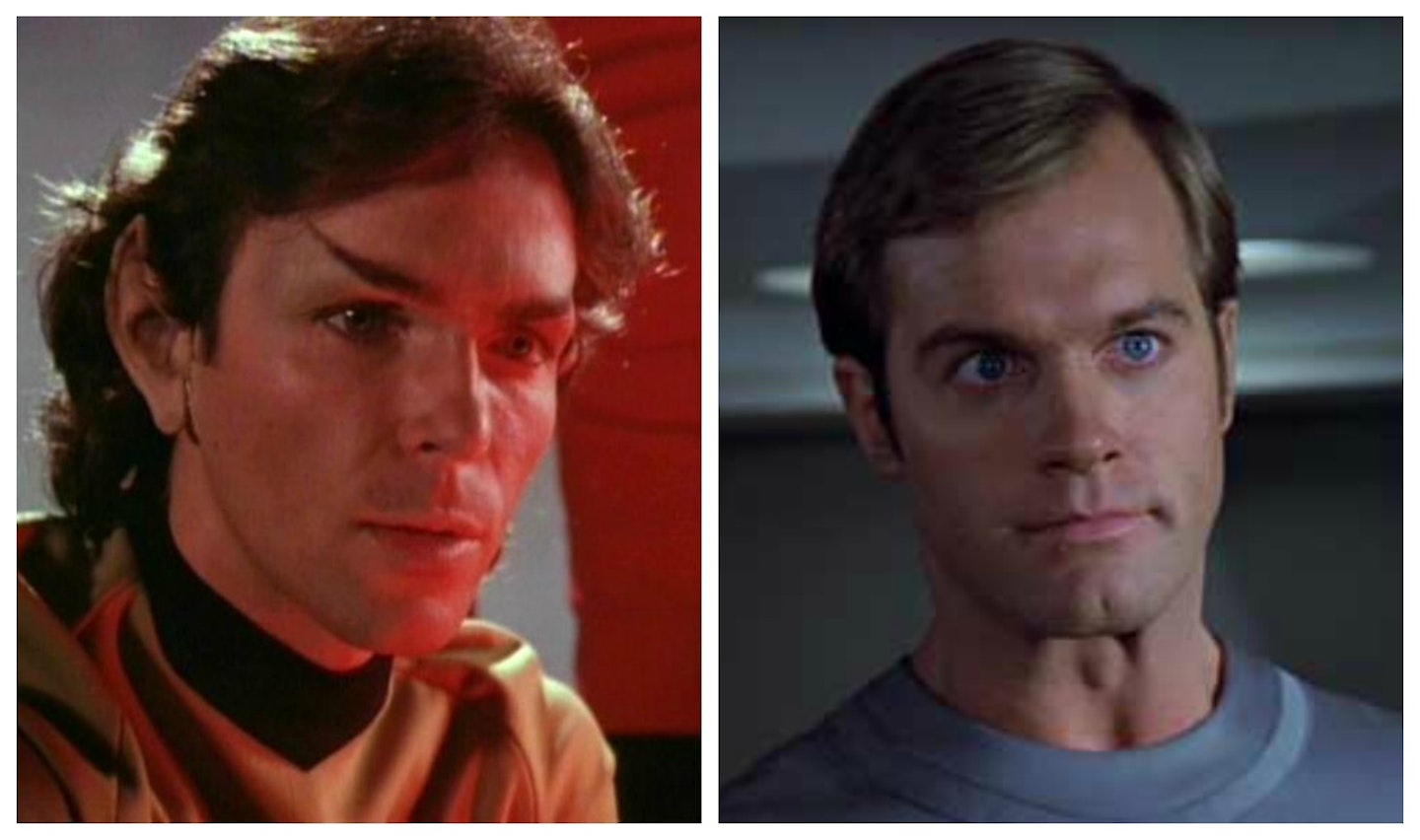
**"The Savage Syndrome"
- Written by Margaret Armen and Alf Harris**
Decker, McCoy and Ilia investigate a derelict vessel in orbit around a lifeless planet. On board, they find that the crew had inexplicably killed each other in brutal and savage ways. Meanwhile, a space mine detonates near the Enterprise, unleashing an energy which attacks the neural impulses of the crew and transforms them into savages. Primitive forces drive their every move. Decker, McCoy and Ilia return to the Enterprise to try and reverse the mine's effects before the starship and her crew are destroyed.
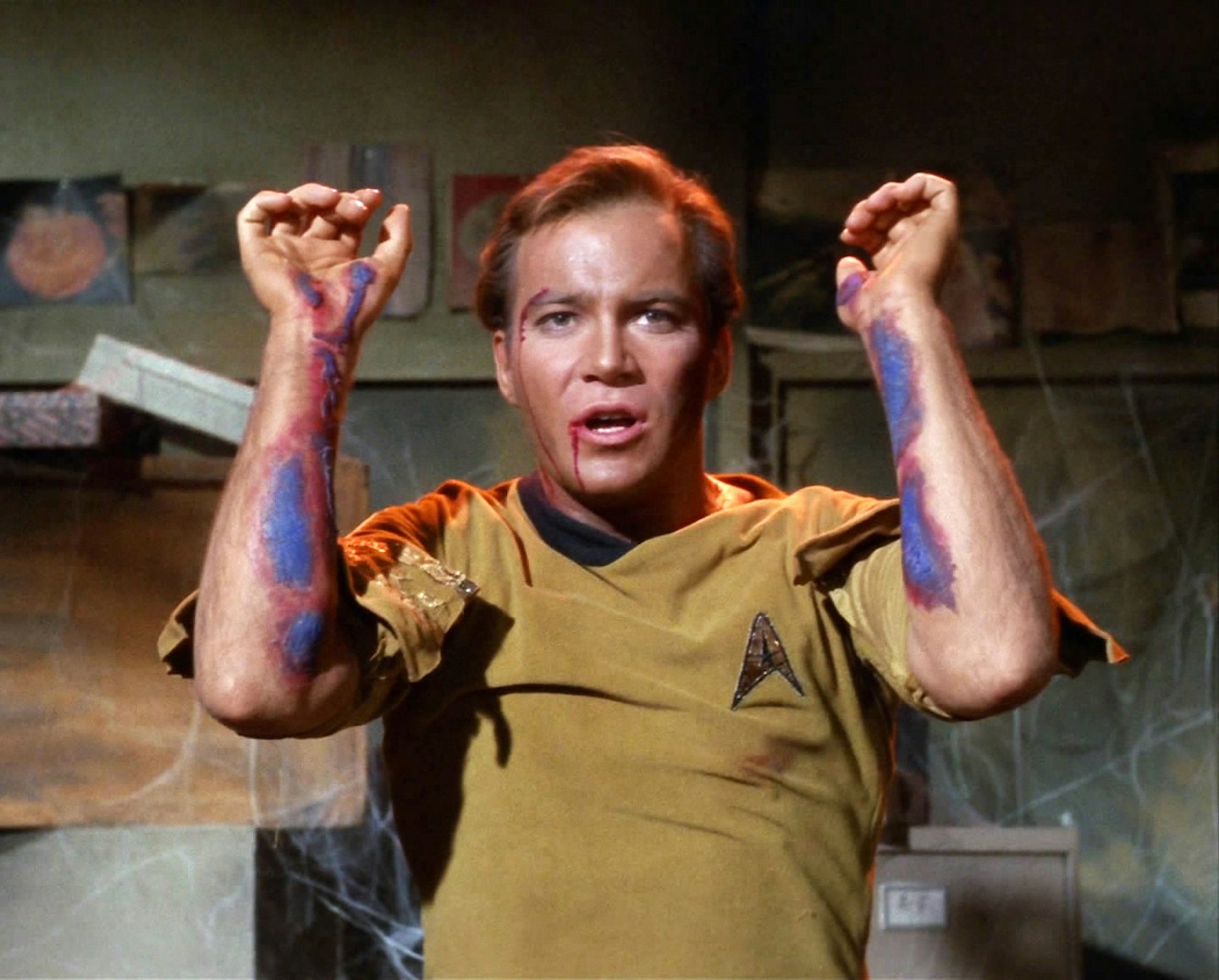
**"Tomorrow And The Stars"
- Written by Larry Alexander**
A transporter malfunction propels Kirk back in time to Pearl Harbor in 1941 - mere days before the Japanese attack. Initially he materializes in a ghost-like state, unable to touch or be touched by anything. He eventually meets Elsa Kelley, a woman unhappy with her marriage to career-Army husband Richard. At first frightened by Kirk's appearances, she ultimately tries to accept his story. Meanwhile, Xon and Scotty attempt to "yank" Kirk back to the Enterprise. While that effort fails, it does have the side effect of making him solid again, which in turn leads to he and Elsa falling in love. The dilemma arises of whether or not Kirk should alter history by warning her of the imminent Pearl Harbor attack, or merely depart with Decker and Xon when they locate him.
"Pearl Harbor is a good setting," muses writer Larry Alexander, "because you can use footage from various war films, which would work. But I didn't want to have the responsibility of the setting, because the story works as a story. It's like sending somebody back in time to kill Hitler in the crib, and he does it. The only irony you can have is his coming back and them saying, 'Why didn't you kill Kowalski like we asked you to?' History would be the same, but somebody else would do the job."
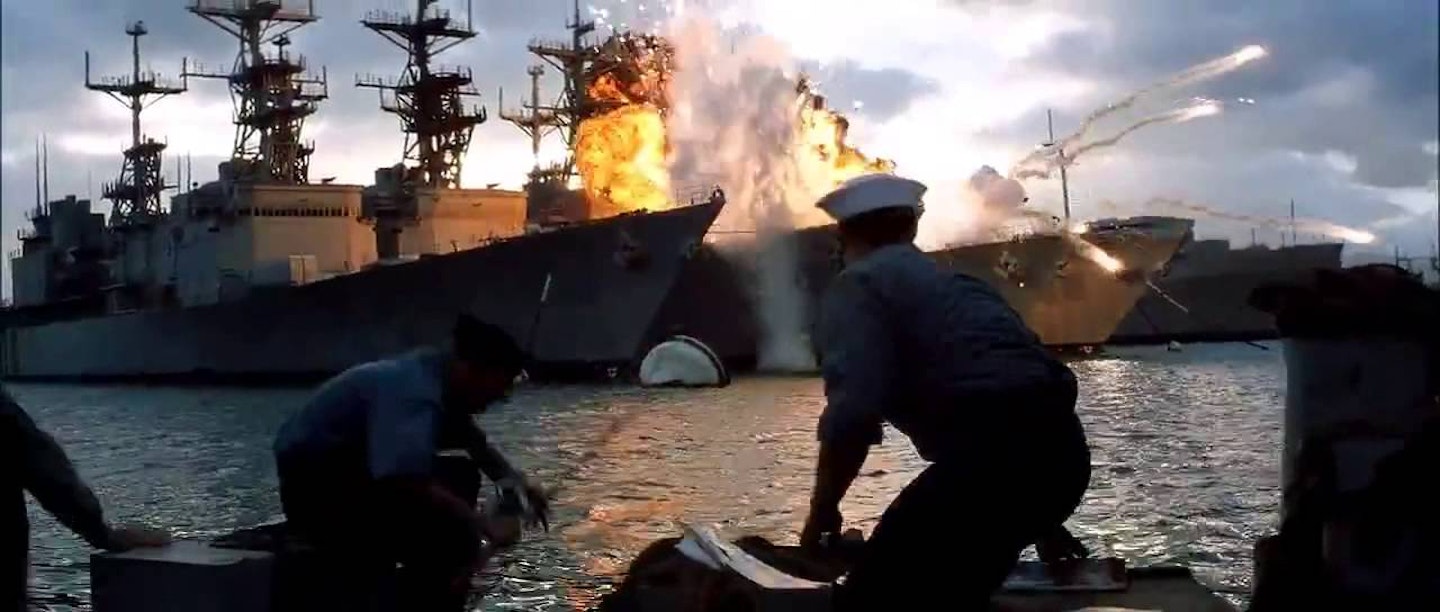
**"Devil's Due"
- Written by William Lansford**
Responding to a distress signal from a solar system "that shouldn't exist," the Enterprise arrives at Neuterra. Kirk, Xon, McCoy, Sulu, Ilia and Chekov beam down to the surface, where they find a type of paradise, but with a saddened populace.
Meeting with Zxolar, Kirk learns that this world had been ecologically ravaged in its past, and that a deal was struck with a being named Komether that in exchange for 1,000 years of prosperity, they would forfeit this planet. Now time's up - Komether is collecting in 20 days - and during all of these years the society succumbed to pleasure and never developed a means of leaving their world. While Kirk sympathizes, the Enterprise is not equipped to transport that many people. In the end, he ends up defending the planet in trial against Komether, who just might be the Devil itself.
"Devil's Due" was eventually rewritten as an episode of Star Trek: The Next Generation.
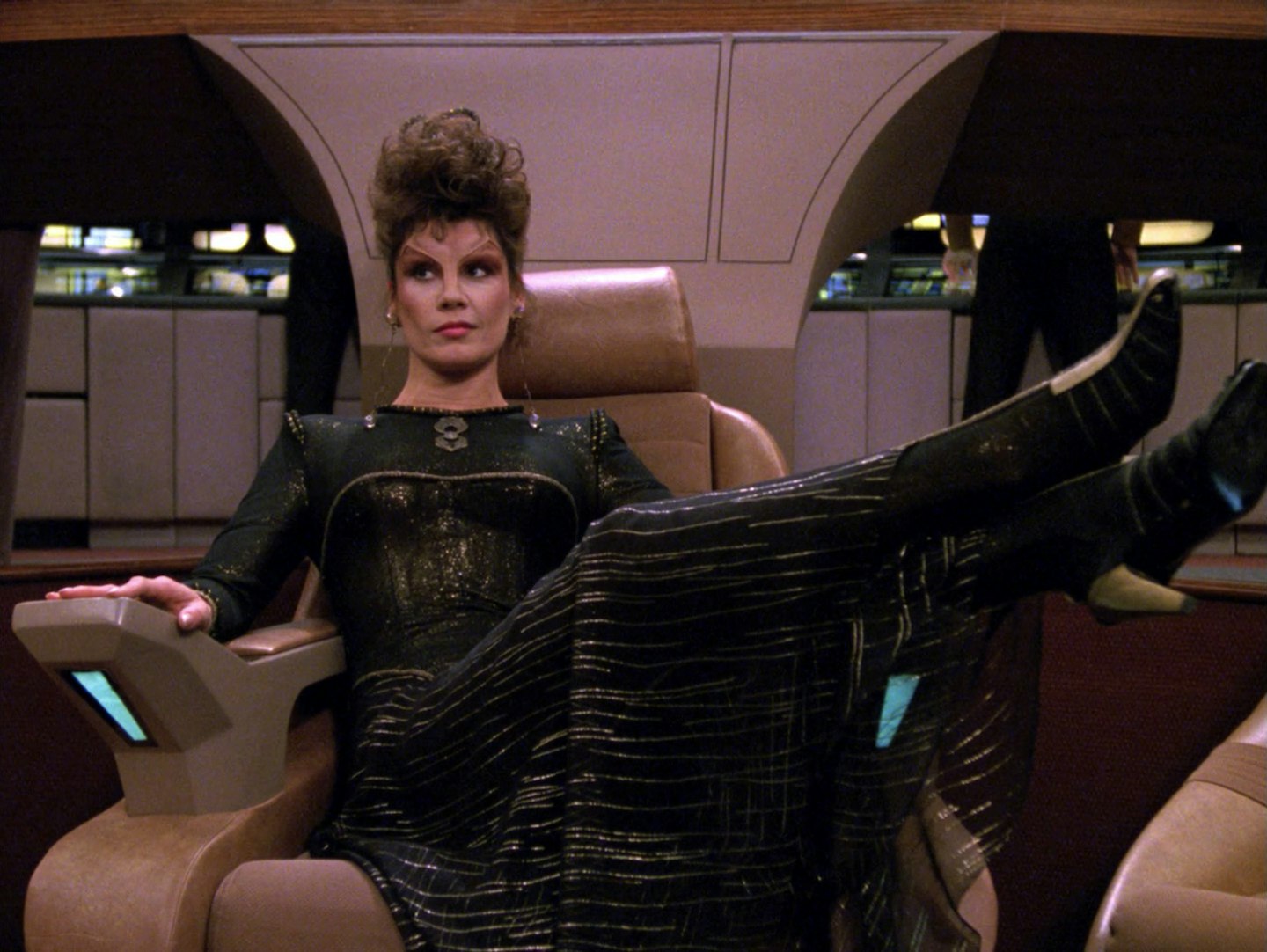
**"Kitumba"
- Written by John Meredyth Lucas**
The Enterprise embarks on a potential suicide mission to the Klingon homeworld to prevent an intergalactic war. Aided by a warrior named Ksia, who doesn't believe either side could survive such a conflict, they pass safely to the planet's surface. There they encounter the leader of the Klingon people, the Kitumba, a child destined for greatness.
Kirk does his best to convince the Kitumba that an invasion of Federation space would be disastrous for both sides. The captain seems to be winning the youth's confidence, but realizes that there's no clear-cut way to end the potential conflict as the Enterprise crew finds itself in the midst of a power struggle between the ruler and his most trusted aides.
John Meredyth Lucas, a writer/producer/director on the original series, comments, "I wanted something that we had never seen before on the series, and that's a penetration deep into enemy space. I started to think of how the Klingons lived. Obviously for the Romulans we had Romans, and we've had different cultures modeled on those of ancient Earth, but I tried to think of what the Klingon society would be like. The Japanese came to mind, so basically that's what it was, with the Sacred Emperor, the Warlord and so on."
"Kitumba" was adapted into an episode of the fan film series Star Trek: New Voyages.
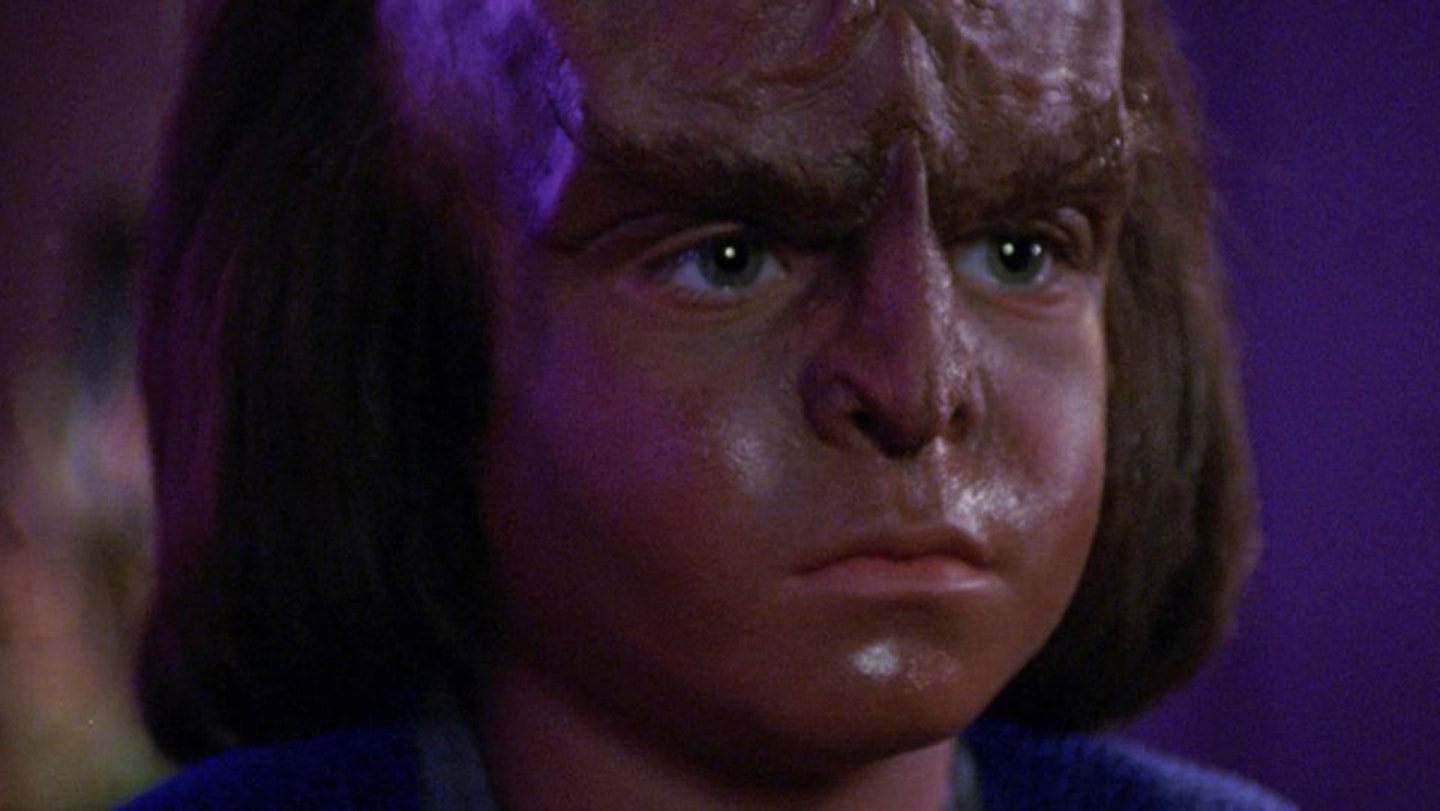
BONUS "EPISODES": LOST VOYAGES OF THE ABRAMSVERSE
In between J.J. Abrams' 2009 reboot of Star Trek and the release of Star Trek Into Darkness, Simon and Schuster intended to publish four novels set in that reimagined universe, all of which were written and ready to go. Unfortunately the decision was made to cancel the line so as to not interfere with what was to come on the big screen. What follows, though, is a look at those adventures.
**Book One: “Refugees”
- Written by Alan Dean Foster**
Official Summary: When a distress call comes in and Kirk orders the Enterprise to answer it, they encounter a large colony ship of refugees under attack. Unable to convince the Dre’kalk to cease fire, Kirk engages them and drives off their ships. The refugees - the Perenores, a race of furry bisymmetrical people - are starving, battered, and many are injured. Their ship wandered off course and their fuel and food is running out, so Kirk and the crew find a place for these displaced refugees. Just two months later, the Barran are threatening the Federation with war for protecting the Perenore menace. But Kirk and Spock are puzzled, the Perenores are peaceful people, what could have happened?
Says Alan Dean Foster, “I’m big with aliens, and I don’t think they are well served in most filmed science fiction. They don’t act alien. The kind of aliens I’m talking about are truly alien. Obviously they have to be comprehensible to us or you can’t respond. So with Refugees I wanted to introduce some real aliens, which is something Star Trek fans wanted. I’m sure Roddenberry would have done it on the original series if they had the technology and the money to visualize it.”
**Book Two: “Seek a Newer World”
- Written by Charles L. Bennett**
Official Summary: Stung by Nero’s escape, the Klingons are looking to salvage their pride by besting the ship that took him down: Enterprise. A boring expedition becomes a fight for survival as the Klingons attack, outnumber, and outflank the young captain and his crew. But just as the Enterprise escapes, the crew comes across an entire civilization of worlds within worlds hidden in a radiation belt of a large planet. A civilization so powerful that they can create all this? Kirk wonders just what are they hiding from and will do whatever it takes to find out.
“We still know next to nothing about the Klingons in the new timeline, so I pretty much had a blank slate," enthuses Charles L. Bennett. "However, it’s certainly likely that Nero’s destruction of an entire Klingon fleet would make them angry and eager to strike out at someone – and the Federation, which has just lost one of its most important worlds [Vulcan], has got to be looking pretty vulnerable to them right now."
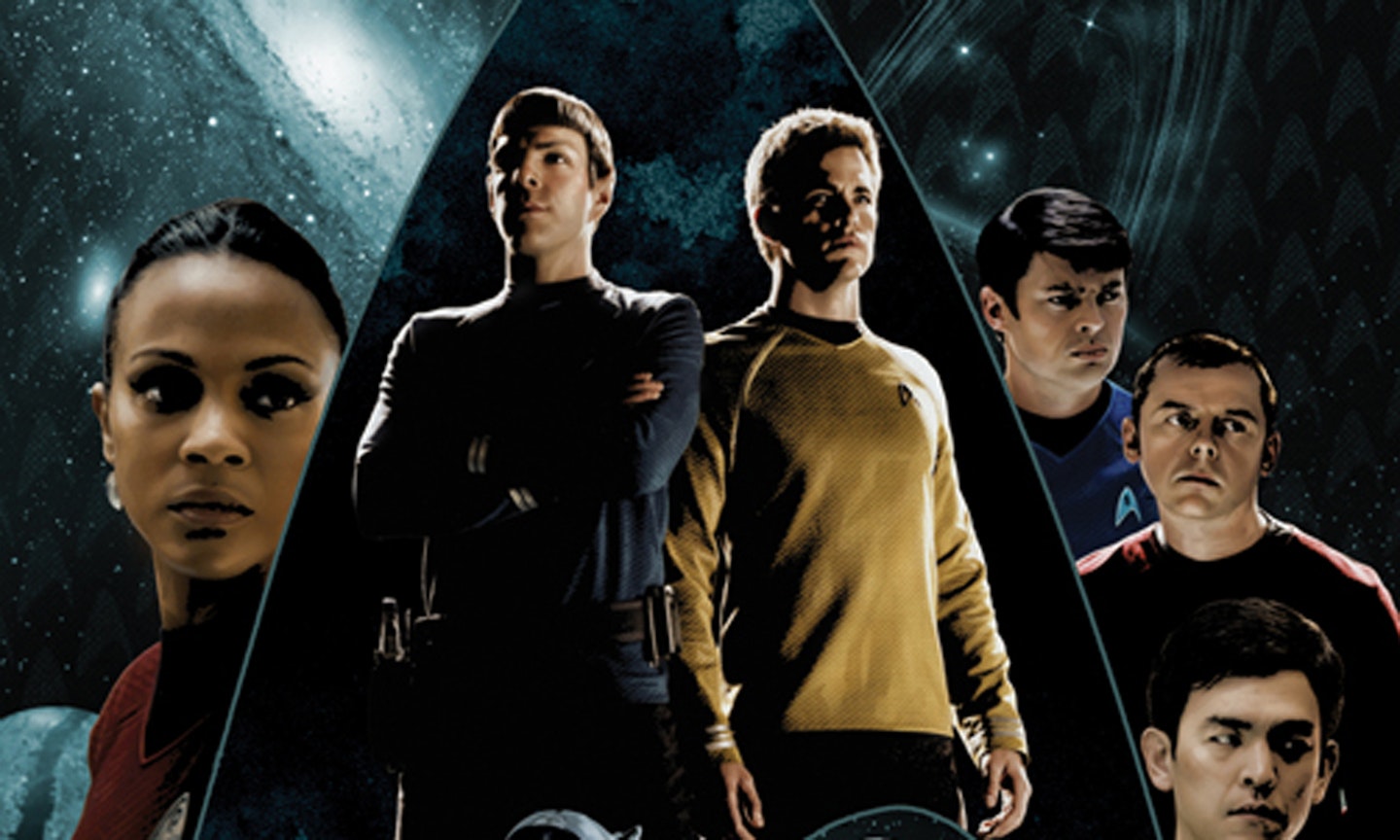
**Book Three: “More Beautiful Than Death”
- Written by David Mack**
Official Summary: Captain Kirk leads the Enterprise on a mission to Akiron, a world known for its rich dilithium deposits and isolationist government. Aboard is Spock’s father, Ambassador Sarek, who is hoping to set up a trade agreement for the Federation with the planet. Pleased that the Federation has entrusted him with this mission, Kirk pledges everyone on Enterprise will grant the ambassador their full cooperation. Spock is happy to see his father and his Vulcan staff putting the destruction of their world behind them. Sarek, however, has a secondary agenda while on board Enterprise.
“In the original Star Trek timeline," David Mack explains, "Sarek and Spock had not spoken since Spock rejected the offer of admission to the Vulcan Science Academy, and their relationship was ice-cold until at least 2269 – more than a decade after the events of the new Star Trek film. All that animosity seems to have gone by the wayside the moment Spock’s mother, Amanda, died during the implosion of Vulcan. My personal feeling is that, in the aftermath of such an epic tragedy, neither Spock nor Sarek would see any logical purpose to harboring a grudge over Spock’s choice of career – especially since that choice saved Sarek’s life. However, putting aside an old grudge does not necessarily mean that father and son will suddenly be of like mind. There are still many issues on which they are bound to disagree, and one such conflict underpins a key subplot in More Beautiful Than Death.”
**Book Four: “The Hazard of Concealing”
- Written by Greg Cox**
Official Summary: The events of the recent movie have left one important loose end: the elder Spock from the 24th century. His knowledge of both technology and future events makes him one of the most important strategic assets in the galaxy. Starfleet Command wants Ambassador Spock to rejoin Starfleet and share that information with them, but Spock is reluctant to interfere with the unfolding of the new timeline. Will he be able to escape a sinister plan wrought by the enemies of the Federation, or will their quest to exploit Spock’s wisdom succeed, with disastrous consequences?
Greg Cox notes, “Ambassador Spock’s advanced knowledge of future events and technology is the warp engine that drives the story. The ways in which that knowledge can be exploited (or abused) is a source of great concern to Spock, Starfleet and various hostile powers. Spock himself is somewhat conflicted as to just how much ‘cheating’ he should indulge in. My primary goal was to capture the infectious sense of fun that the new movie had restored to the series, while still dealing with the serious issues raised by the premise. Most of all, I wanted this to be a book that felt like the new movie, and that would appeal to both long-time fans and to readers who might have never picked up a Star Trek novel before.”
